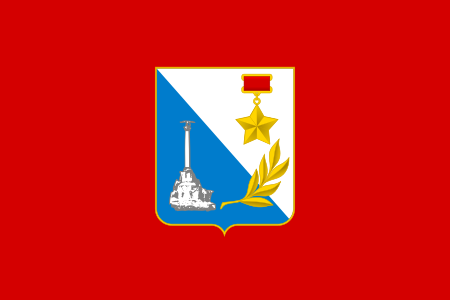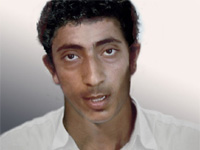Korazim Plateau
|
Read other articles:

Soumaïla Coulibaly Nazionalità Francia Altezza 190 cm Peso 82 kg Calcio Ruolo Difensore Squadra Anversa CarrieraGiovanili 2018-2021 Paris Saint-GermainSquadre di club1 2021-2023 Borussia Dortmund II25 (0)2022-2023 Borussia Dortmund1 (0)2023-→ Anversa12 (0)Nazionale 2019 Francia U-162 (0)2019 Francia U-172 (0)2022 Francia U-204 (0) 1 I due numeri indicano le presenze e le reti segnate, per le sole partite di campionato.Il simbolo → indica un trasferimento in…

List of U.S. cities with large Black populations This article needs additional citations for verification. Please help improve this article by adding citations to reliable sources. Unsourced material may be challenged and removed.Find sources: List of U.S. cities with large Black populations – news · newspapers · books · scholar · JSTOR (April 2023) (Learn how and when to remove this message) Proportion of Black Americans in each county of the fifty state…

Lists of Italian films 1910s 1910 1911 1912 1913 19141915 1916 1917 1918 1919 1920s 1920 1921 1922 1923 19241925 1926 1927 1928 1929 1930s 1930 1931 1932 1933 19341935 1936 1937 1938 1939 1940s 1940 1941 1942 1943 19441945 1946 1947 1948 1949 1950s 1950 1951 1952 1953 19541955 1956 1957 1958 1959 1960s 1960 1961 1962 1963 19641965 1966 1967 1968 1969 1970s 1970 1971 1972 1973 19741975 1976 1977 1978 1979 1980s 1980 1981 1982 1983 19841985 1986 1987 1988 1989 1990s 1990 1991 1992 1993 19941995 19…

Blog written by Steven Molaro The SneezeType of siteNewsOwnerSteven MolaroURLhttp://thesneeze.com/Current statusInactive (last updated April 7, 2011) The Sneeze is a blog written by Steven Molaro,[1][2] identified on the site only as Steve of Los Angeles, California.[3] In 2005 the site was listed among the top 101 websites by PC Magazine,[4] and won a Blogger's Choice Award.[2] The site gained attention for its Steve, Don't Eat It! section, a series …

International nonprofit service organization Rotarian redirects here. For the ship, see SS Rotarian. Rotary InternationalHeadquarters in Evanston, Illinois, United StatesFormationFebruary 23, 1905; 119 years ago (1905-02-23)FounderPaul P. HarrisTypeService clubHeadquartersEvanston, Illinois, United StatesLocationGlobal (except Cuba, Greenland, Guinea, Iran, North Korea, Vietnam, Turkmenistan, Uzbekistan, and some Arab countries)Membership 1.4 millionOfficial language English, F…

この記事は検証可能な参考文献や出典が全く示されていないか、不十分です。出典を追加して記事の信頼性向上にご協力ください。(このテンプレートの使い方)出典検索?: 彫刻家 – ニュース · 書籍 · スカラー · CiNii · J-STAGE · NDL · dlib.jp · ジャパンサーチ · TWL(2016年11月) 彫刻家を描いた版画 彫刻家(ちょうこくか)とは、…

Travelling for pleasure or business within one's country Tourists on the beach in Bournemouth, England Domestic tourism is tourism involving residents of one country traveling only within that country.[1] Such a vacation is known as a domestic vacation (British: domestic holiday or holiday at home). For large countries with limited skill in foreign languages, for example Russia, Brazil, Canada, Australia, United States, China and India, domestic tourism plays a very large role in the tot…

artikel ini tidak memiliki pranala ke artikel lain. Tidak ada alasan yang diberikan. Bantu kami untuk mengembangkannya dengan memberikan pranala ke artikel lain secukupnya. (Pelajari cara dan kapan saatnya untuk menghapus pesan templat ini) Artikel ini sebatang kara, artinya tidak ada artikel lain yang memiliki pranala balik ke halaman ini.Bantulah menambah pranala ke artikel ini dari artikel yang berhubungan atau coba peralatan pencari pranala.Tag ini diberikan pada Maret 2016. Sekolah Menengah…

Hogwarts LegacyvideogiocoPiattaformaMicrosoft Windows, PlayStation 4, PlayStation 5, Xbox One, Xbox Series X/S, Nintendo Switch Data di pubblicazioneMicrosoft Windows, PlayStation 5, Xbox Series X/S: 10 febbraio 2023 PlayStation 4, Xbox One: 5 maggio 2023 Nintendo Switch: 14 novembre 2023 GenereAction RPG OrigineStati Uniti SviluppoAvalanche Software, Studio Gobo PubblicazioneWarner Bros. Interactive Entertainment, Portkey Games DirezioneAlan Tew ProduzioneJames Cabre…

Religious schools of the Greco-Roman world Mystery religions redirects here. For mystery religions in Western culture, see Western esotericism. Hydria by the Varrese Painter (c. 340 BC) depicting Eleusinian scenes Mystery religions, mystery cults, sacred mysteries or simply mysteries, were religious schools of the Greco-Roman world for which participation was reserved to initiates (mystai). The main characterization of this religion is the secrecy associated with the particulars of the…

Para otros usos de este término, véase Crimea (desambiguación). Crimea Крым/Крим/Qırım Península Vista de satélite de la península de Crimea y el mar de Azov (derecha) en mayo de 2015Ubicación geográficaContinente EuropaMar mar Negro (al oeste y al sur) y mar de Azov (al este)Estrecho estrecho de KerchRegión Rusia del Sur y Región sur de UcraniaCoordenadas 45°N 34°E / 45, 34Ubicación administrativaPaís Rusia RusiaReconocimiento por algunas naciones,[1]R…

Campionati del mondo di ciclismo su pista 20172017 UCI Track Cycling World Championships Competizione Campionati del mondo di ciclismo su pista Sport Ciclismo su pista Edizione 114ª Organizzatore UCI Date dal 12 aprileal 16 aprile 2017 Luogo Hong Kong Partecipanti 345 Nazioni 41 Impianto/i Hong Kong Velodrome Sito web trackworldchamp.hk/ Statistiche Miglior medagliato Cameron Meyer (2/1/0) Miglior nazione Australia (3/5/3) Gare 10 gare maschili10 gare femminili Cronologi…

American politician George A. WilsonUnited States Senatorfrom IowaIn officeJanuary 14, 1943 – January 3, 1949Preceded byClyde L. HerringSucceeded byGuy Gillette28th Governor of IowaIn officeJanuary 12, 1939 – January 14, 1943LieutenantBourke B. HickenlooperPreceded byNelson G. KraschelSucceeded byBourke B. HickenlooperMember of the Iowa Senatefrom the 30th districtIn officeJanuary 10, 1927 – December 20, 1936Preceded byWilliam J. GoodwinSucceeded byJames J. G…

Erysimum cheiri Pour les articles homonymes, voir Ravenelle (homonymie). Erysimum cheiri Giroflée des muraillesClassification Règne Plantae Division Magnoliophyta Classe Magnoliopsida Ordre Brassicales Famille Brassicaceae Genre Erysimum EspèceErysimum cheiri(L.) Crantz, 1769 Classification phylogénétique Classification phylogénétique Ordre Brassicales Famille Brassicaceae La giroflée des murailles (Erysimum cheiri, syn. Cheiranthus cheiri), aussi appelée violier jaune ou ravenelle, bâ…

العلاقات الجزائرية الناوروية الجزائر ناورو الجزائر ناورو تعديل مصدري - تعديل العلاقات الجزائرية الناوروية هي العلاقات الثنائية التي تجمع بين الجزائر وناورو.[1][2][3][4][5] مقارنة بين البلدين هذه مقارنة عامة ومرجعية للدولتين: وجه المقارنة ا�…

For other uses, see Tangshan (disambiguation). Prefecture-level city in Hebei, People's Republic of ChinaTangshan 唐山市Prefecture-level cityFrom top, left to right: Eastern Qing tombs, Tangshan Southlake Convention & Exhibition Center, Dachengshan Park, Cao Xueqin Cultural Park, Tangshan Art MuseumNickname: Phoenix City (凤凰城)Location of Tangshan City jurisdiction in HebeiTangshanLocation of the city centre in HebeiShow map of HebeiTangshanTangshan (Northern China)Show map of N…

Member of al-Qaeda For other people named Mohammed Said, see Mohammed Said (disambiguation). Muhammad Sa'id Ali Hasan Muhammad Sa'id Ali Hasan al-Umda (died 22 April 2012), also known as Gharib al-Taezi,[1] was self-implicated on videotape as a possible terrorist in 2002, and was wanted by the United States Department of Justice's FBI, which was seeking information about his identity and whereabouts. He was once a bodyguard for Osama bin Laden and was a field commander for al-Qaeda in th…

Premijer liga BiH 2022-2023M:TEL PREMIJER LIGE BIH 2022-2023 Competizione Premijer liga BiH Sport Calcio Edizione 23ª Organizzatore N/FSBiH Date dal 15 luglio 2022al 28 maggio 2023 Luogo Bosnia ed Erzegovina Partecipanti 12 Formula girone unico Risultati Vincitore Zrinjski Mostar(8º titolo) Retrocessioni Leotar Sloboda Tuzla Statistiche Miglior marcatore Nemanja Bilbija (15) Incontri disputati 132 Gol segnati 314 (2,38 per incontro) Cronologia della com…

1984 studio album by Hans-Joachim RoedeliusGeschenk des Augenblicks - Gift of the MomentStudio album by Hans-Joachim RoedeliusReleased1984Recorded1983GenreNeoclassical new age, new age, ambientLength47:25LabelEditions EGProducerHans-Joachim RoedeliusHans-Joachim Roedelius chronology Auf leisen Sohlen(1984) Geschenk des Augenblicks - Gift of the Moment(1984) Wie das Wispern des Windes(1986) Geschenk des Augenblicks – Gift of the Moment is the eleventh solo album by German keyboardist Ha…

Japanese ultranationalist and organized crime power broker Yoshio Kodama児玉 誉士夫Mug shot of Kodama while he was held as suspected a war criminal in Sugamo Prison, 1946Born(1911-02-18)February 18, 1911Nihonmatsu, Fukushima, JapanDiedJanuary 17, 1984(1984-01-17) (aged 72)Tokyo, JapanOccupation(s)Navy officer, businessman, political fixer, spySpouseSayoko (1940–1958)[1]ChildrenHagiwara Kichitaro (eldest son) (児玉博隆), Morihiro Kodama (third son) (児玉守弘)[citat…


